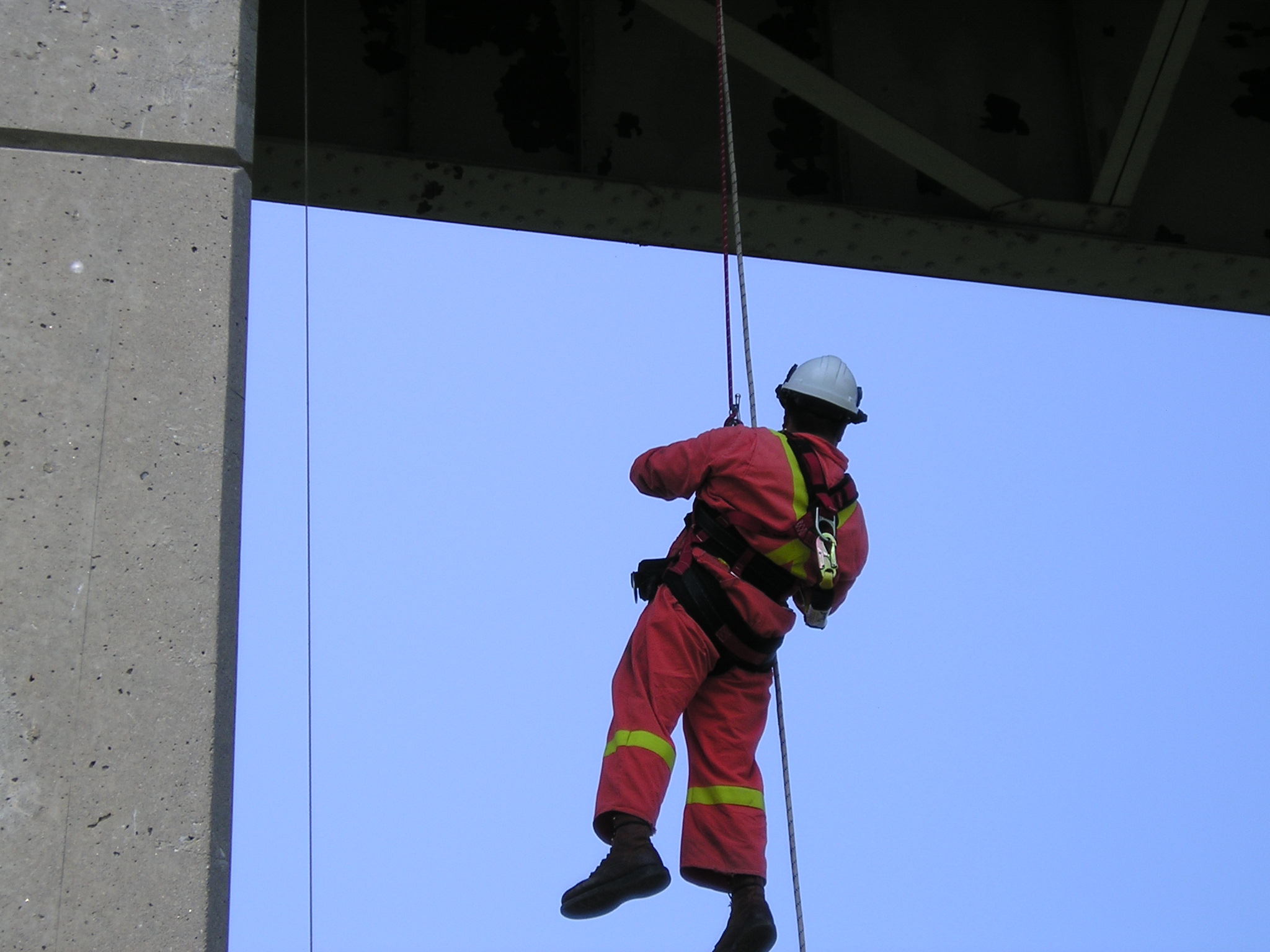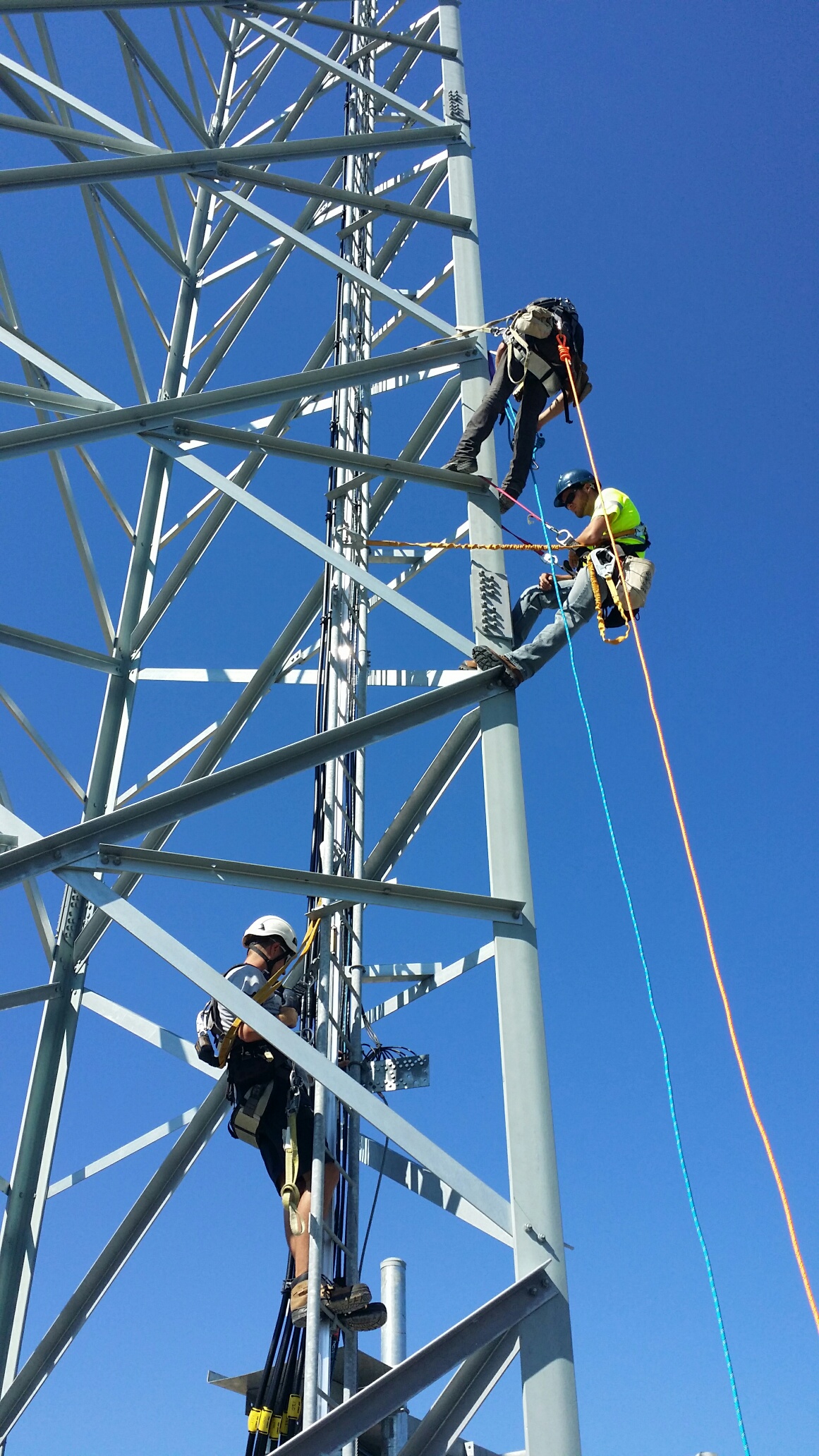Working at Heights
Required training and equipment
 Working at Heights training programs for companies, fire departments, and individuals have seen many improvements to historical rescue gear and the welcomed invention of many new pieces of equipment in the past 25 years.
Working at Heights training programs for companies, fire departments, and individuals have seen many improvements to historical rescue gear and the welcomed invention of many new pieces of equipment in the past 25 years.
Much of the equipment now available has additional safeties built in, allowing it to pass “the whistle test.” Should something happen to the rescuer manning the system while the victim is hanging on a lifeline, or when a whistle is hypothetically blown at any time during testing, the equipment should either lock-up, or offer automatic controlled descent. The alternative would have the victim free-falling to earth in the event the rescuer becomes distracted or incapacitated.
Most regulations pertaining to Working at Heights will reference the standard to which the equipment has meet. Europe has CE/EN, the United States have OSHA/ANSI, AS/NZS for Australia and New Zealand, and CSA for Canada.
The four main types and purposes of equipment for people who work at heights are Sport, Rope Access, Emergency Services, and Industrial.
Since there is no aspect to working on wind turbines that is Sport (rock climbing/mountaineering) it is not recommended any Sport equipment be used in this field. It often does not have the strength to handle the rigors of industrial situations, and in many cases does not incorporate the whistle test safeties.
The equipment used in Rope Access is not very expensive but requires at least 40 hours of training, as well as continued training to maintain the skills to be efficient and hopefully, by default, safe. Not only can the failure rate be quite high, but even after attending training, workers still require supervision by a person with a higher level of Rope Access training when they go to work. It is very also physically demanding, so worker injury due to strained and pulled muscles is not uncommon.
The gear used in Rope Access is specific to a certain diameter of rope, therefore compatibility becomes an issue should the user attempt to use gear intended for something else, such as Emergency Services. Some feel, while Rope Access follows a method for using their equipment which meets an equivalent level of safety for working at height, most of the gear is not CSA approved which may become an issue with a labour inspector or during an accident investigation.
Emergency Services, such as fire departments, generally require a National Fire Protection Association (NFPA) rating on the gear they use. NFPA is the body which prepares the standards for Emergency Services and what they use for training operating protocols and guidelines in addition to fire code standards. The equipment, for the most part, is not very expensive but requires a fair amount of initial and regular recurrent training to maintain the skill set and efficiency. Most of the time, rescues are taught with a full complement of trained responders, therefore the skills learned don’t carry over well when one person is trying to conduct the rescue alone in a remote location. Most of the gear used by Fire Departments are not CSA approved so again, this may become an issue with enforcement if you are a business and not a Fire Department.
The majority of all work erecting and maintaining wind turbines is Industry. The industrial regulations in each region state the standard in which the equipment must be tested to. In Canada, most provinces require the fall protection equipment to meet CSA standards. This makes life easy for businesses, managers, and supervisors to enforce since it will either be stamped with the CSA logo or have associated paperwork stating such.
 Most CSA approved Fall Protection equipment and rescue gear is what some refer to as “clip-and-go/pre-rigged” equipment, and is very user friendly and intuitive. Even though the initial outlay for the cost of equipment is a bit more, it is safer, and the time commitment in training is much less than Rope Access or Emergency Services techniques, due to the ease of use of the equipment. It also requires less ongoing training to maintain the skills and techniques, which is beneficial to businesses which may only train their workers in Working at Heights and Rescue every one to three years.
Most CSA approved Fall Protection equipment and rescue gear is what some refer to as “clip-and-go/pre-rigged” equipment, and is very user friendly and intuitive. Even though the initial outlay for the cost of equipment is a bit more, it is safer, and the time commitment in training is much less than Rope Access or Emergency Services techniques, due to the ease of use of the equipment. It also requires less ongoing training to maintain the skills and techniques, which is beneficial to businesses which may only train their workers in Working at Heights and Rescue every one to three years.
Training should be specific to the equipment in use and situations which may be encountered. Using CSA approved clip-and-go systems ensures the equipment will not be an issue during an inspection or investigation, and a much greater chance it will be used correctly during an actual emergency.
Scott Connor is the chief training officer for TEAM-1 Academy, Inc.
TEAM-1 Academy, Inc | www.team1academy.com
Volume: 2016 March/April









